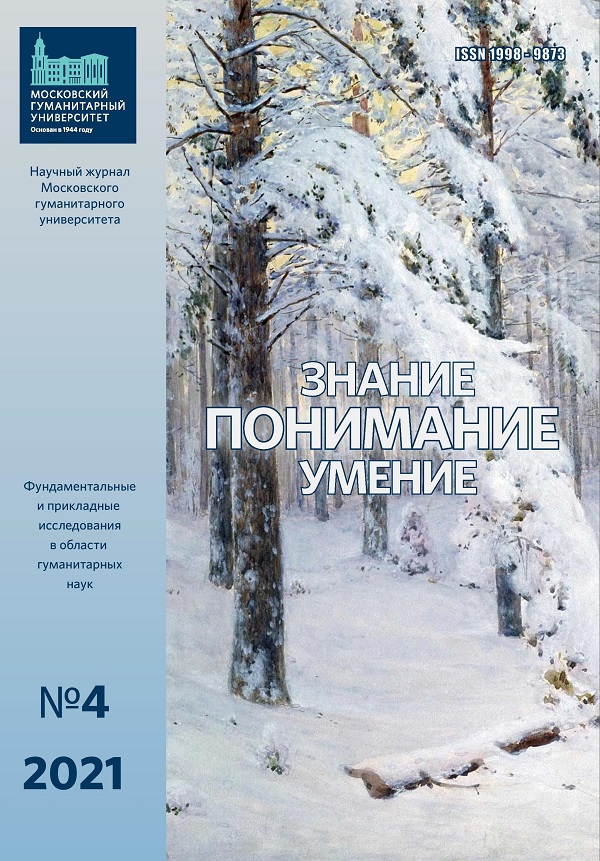Main page / "Knowledge. Understanding. Skill" Journal / Contents / 2014 / No. 1
Zhumadilova M. B. and Zhumadilova Zh. B. The Possibilities of Using Information Technology in Creating a Model System for Monitoring
(The Esenov Caspian State University of Technologies and Engineering,
Aktau, the Republic of Kazakhstan),
(Kazakh Humanities and Law Institute, Astana, the Republic of Kazakhstan)
Abstract ♦ The article reveals the possibilities of using information technology in the design of systems for the ecological monitoring of the Caspian Sea. The need to establish monitoring systems has been caused by the increasing incidence of environmental disasters at the Caspian Sea coast. Theу seem to result from the activity of oil producing companies from different countries. The most appropriate systems to effectively monitor the level of water pollution are to be found in modern information technology. It will not only take into account cases of environmental disasters, but also will allow to carry out forecasting. The application of distributed databases being developed to collect information will make it possible to identify pollution hot-spots quite accurately, monitor the current situation and develop an adequate control action for a prompt response.
Kazakhstan has adopted a number of legislative acts. They are aimed at creating information systems with the ability to integrate the data into a consolidated database of the results obtained from the state’s monitoring of the environment and natural resources. Embedding mathematical models into these systems allows to solve a number of problems of the analysis of information, such as forecasting, analysis for certain periods of time, operational monitoring at any time. The application of environmental assessment subsystem will permit to estimate the impact of harmful factors on the environment. By mathematical modeling of the technological process of industrial facilities, we can get the results enabling us to control sources of pollution. The modeling of current situation allows to quite accurately detect pollution foci, form a rapid response team and automate a coordinated activity of experts on environmental monitoring in different countries.
The systematic approach to environmental monitoring is an urgent task, which implies the state’s control of the environment and public health, accounting data obtained, forecasting and opportunity to actively influence the situation and exchange information between different levels and databanks of the systems and subsystems of the state’s unified network of environment and natural resources monitoring.
Keywords: information technologies, monitoring systems, environmental monitoring, Caspian Sea, databases, forecasting, ecosystem deterioration, biosystem, ecosystem of the Caspian Sea.
Zhumadilova Mereke Bapanovna, Candidate of Science (engineering), associate professor of the Informatics and Computer engineering Department, the Esenov Caspian State University of Technologies and Engineering. Postal address: В. В, 32 microdistrict, Aktau, Mangystau Province, the Republic of Kazakhstan, 130003. Tel.: +7 (7172) 42-57-31. E-mail:
zhumadilova@inbox.ru
Zhumadilova Zharkyn Bapanovna, Candidate of Science (physics and mathematics), associate professor of the Economics Department, Kazakh Humanities and Law Institute. Postal address: 8 Korgalzhyn St., Astana, the Republic of Kazakhstan, 010000. Tel.: +7 (7172) 70-30-39. E-mail:
zharkin_02_kz@mail.ru

Citation: Zhumadilova, M. B. and Zhumadilova, Zh. B. (2014) Vozmozhnosti ispol'zovaniia informatsionnykh tekhnologii v sozdanii modeli sistemy monitoringa [The Possibilities of Using Information Technology in Creating a Model System for Monitoring]. Znanie. Ponimanie. Umenie, no. 1, pp. 335–344. (In Russ.).
Submission date: 10.12.2013.
RUSSIAN VERSION
REFERENCE
Golovanov, N. V., Kniazev, A. A., Pugin, A. M. and Shaidakov, V. V. (2001) Peredvizhnaia stantsiia operativnogo ekologicheskogo monitoringa [Mobile Station for Operating Environmental Monitoring]. In: Problemy prognozirovaniia, predotvrashcheniia i likvidatsii posledstvii chrezvychainykh situatsii [Problems of Forecasting, Prevention and Rectification of the Consequences of Emergency Situations] : The Proceedings of the 2nd All-Russian Research and Practice Conference. Ufa, Belaia reka Publ. 386 p. Pp. 77-80. (In Russ.).
Kontseptsiia ekologicheskoi bezopasnosti Respubliki Kazakhstan na 2004–2015 gody. № 1241 ot 3 dekabria 2003 g. [The Conception of Ecological Safety of the Republic of Kazakhstan for 2004-2015, no. 1241, December 3, 2003]. (2003) Aktau, Caspii print. 33 p. (In Russ.).
Natsional'nyi plan deistvii po okhrane okruzhaiushchei sredy dlia ustoichivogo razvitiia Respubliki Kazakhstan [The National Plan of Action on Environmental Protection for a Sustainable Development of the Republic of Kazakhstan]. (1998) Astana, NPTsZem NAN RK Publ. 12 p. (In Russ.).
Sistema ekologicheskogo kontrolia okruzhaiushchei sredy Ankom-AM [The System of the Eological Control of Environment Ankom-AM]. (1992) In: Problemy ekologii Moskvy. Set' nazemnykh izmerenii [The Problems of the Ecology of Moscow. A Ground-based Measurement Network] / ed. by E. I. Pupurev. Moscow, Gidrometeoizdat Publ. 200 p. Pp. 23-56. (In Russ.).
Khachaturov, T. S. (2002) Ekonomika prirodopol'zovaniia [Environmental Management Economy]. Moscow, Vysshaia shkola Publ. 271 p. (In Russ.).
Khotuleva, M. V., Cherp, O. M. and Vinnichenko, V. N. (2000) Kak organizovat' obshchestvennuiu ekologicheskuiu ekspertizu [How to Organize a Public Environmental Assessment] : guide for public organizations. 3rd ed. Moscow, Ekolain Publ. 156 p. (In Russ.).
Ekologicheskii kodeks Respubliki Kazakhstan № 212-III ot 09.01.2007 [The Ecological Code of the Republic of Kazakhstan. No. 212-III, 09.01.2007]. (2007) Astana, NPTsZem NAN RK Publ. 46 p. (In Russ.).
Balzarova, M. A. and Castka, P. (2008) Underlying Mechanisms in the Maintenance of ISO 14001 Environmental Management System. Journal of Cleaner Production, vol. 16, no. 18, pp. 1949-1957.
Kabirian, A. and Hemmati, M. R. (2007) A Strategic Planning Model for Natural Gas Transmission Networks. Energy Policy, vol. 35, no. 11, pp. 5656-5670.
Seiffert, M. (2008) Environmental Impact Evaluation Using a Cooperative Model for Implementing EMS (ISO 14001) in Small and Medium-sized Enterprises. Journal of Cleaner Production, vol. 16, no. 14, pp. 1447-1461.
Spellerberg, I. F. (2005) Monitoring Ecological Change. 2nd ed. Cambridge ; New York : Cambridge University Press. xvii, 391 p.
Zeilhofer, P. and Topanotti, V. P. (2008) GIS and Ordination Techniques for Evaluation of Environmental Impacts in Informal Settlements: A Case Study from Cuiabá, Central Brazil. Applied Geography, vol. 28, no. 1, pp. 1-15.
Zuur, A. F., Ieno, E. N. and Smith, G. M. (2007) Analysing Ecological Data. New York ; London, Springer. xxvi, 672 p.
|
|
|
 The No. 4 2021 of the
The No. 4 2021 of the
Journal "Knowledge.
Understanding. Skill"
is issued
|
|
|
|